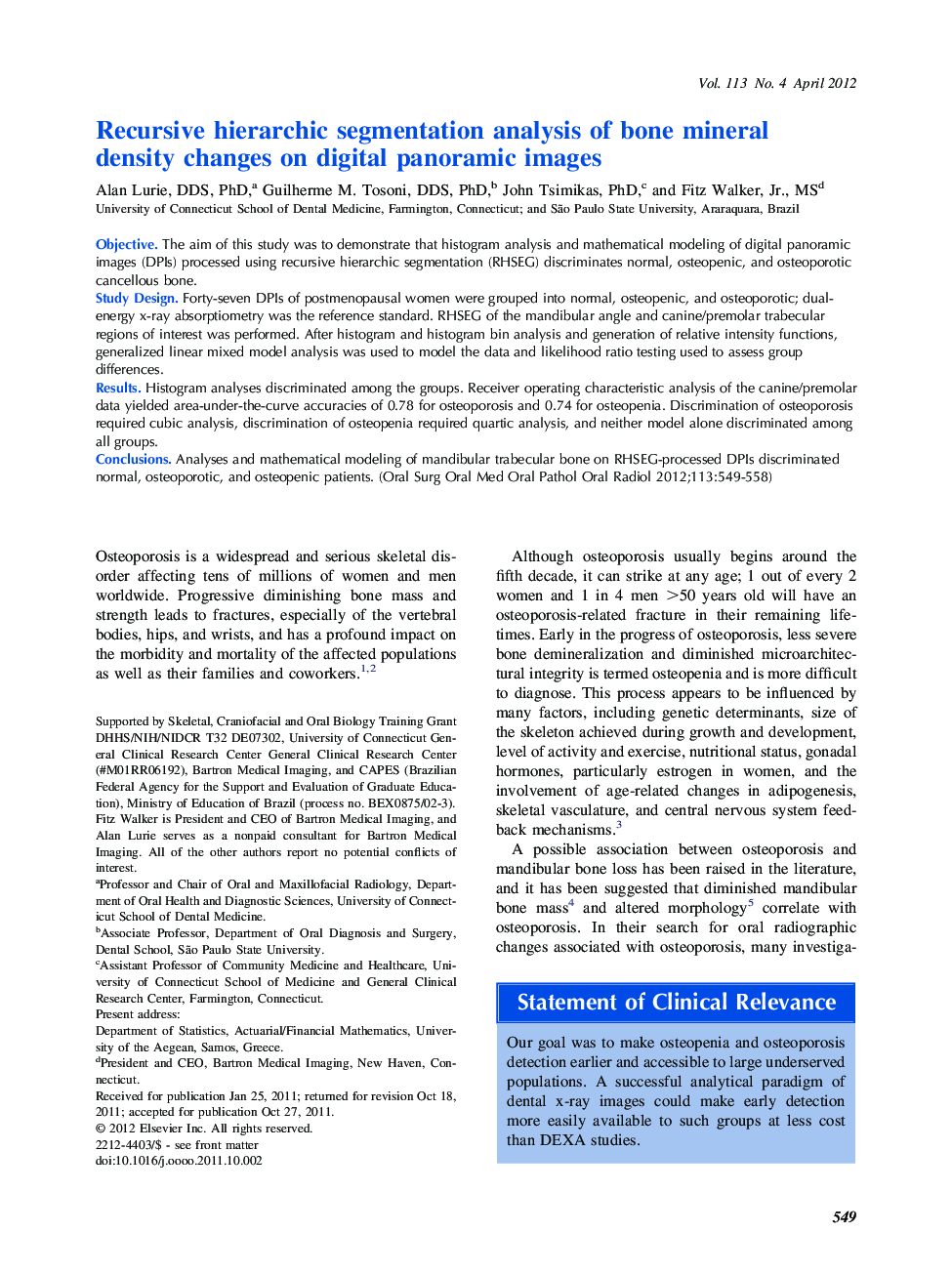| Article ID | Journal | Published Year | Pages | File Type |
|---|---|---|---|---|
| 6057685 | Oral Surgery, Oral Medicine, Oral Pathology and Oral Radiology | 2012 | 11 Pages |
ObjectiveThe aim of this study was to demonstrate that histogram analysis and mathematical modeling of digital panoramic images (DPIs) processed using recursive hierarchic segmentation (RHSEG) discriminates normal, osteopenic, and osteoporotic cancellous bone.Study DesignForty-seven DPIs of postmenopausal women were grouped into normal, osteopenic, and osteoporotic; dual-energy x-ray absorptiometry was the reference standard. RHSEG of the mandibular angle and canine/premolar trabecular regions of interest was performed. After histogram and histogram bin analysis and generation of relative intensity functions, generalized linear mixed model analysis was used to model the data and likelihood ratio testing used to assess group differences.ResultsHistogram analyses discriminated among the groups. Receiver operating characteristic analysis of the canine/premolar data yielded area-under-the-curve accuracies of 0.78 for osteoporosis and 0.74 for osteopenia. Discrimination of osteoporosis required cubic analysis, discrimination of osteopenia required quartic analysis, and neither model alone discriminated among all groups.ConclusionsAnalyses and mathematical modeling of mandibular trabecular bone on RHSEG-processed DPIs discriminated normal, osteoporotic, and osteopenic patients.
